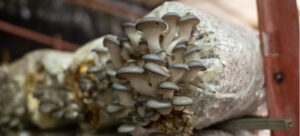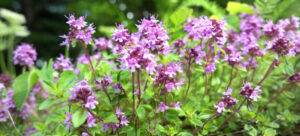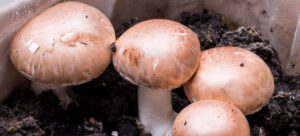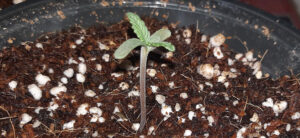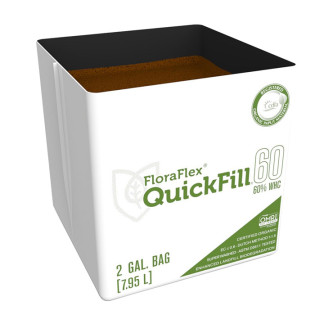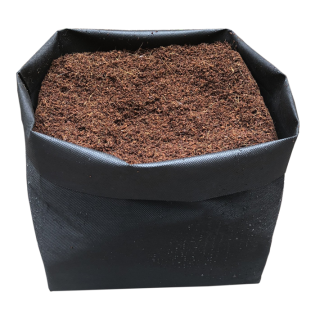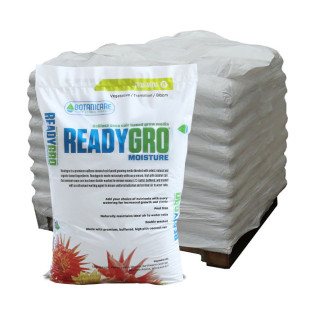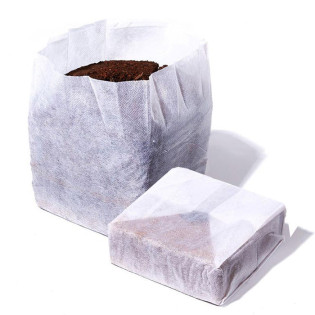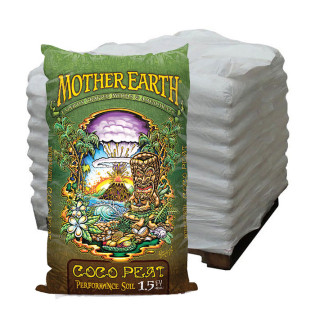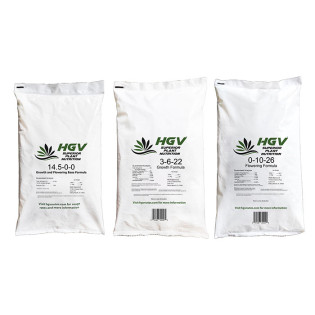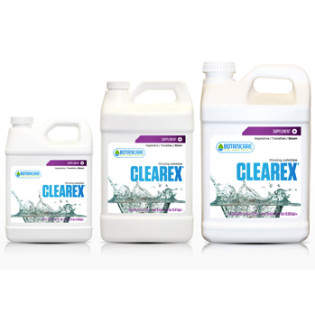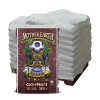
The list of growing mediums you can grow your plants is extensive. From different types of garden soils and potting mixes like Coco Coir to various-sized pots and irrigation set-ups.
The list of choices you will need to make can be dizzying.
If you’re new to gardening, there are just two simple words you should remember - coco coir.
Although this term likely isn’t familiar to a beginner, you should become familiar. Beneficial to any garden or gardener, coco coir is a growing medium that you need to consider.
Knowing about coco coir and how to use it is beneficial to all growers. This complete guide will tell you everything you need to know.
What Is Coco Coir?

Coco coir is short for Coconut Coir and this grow media is made from actual coconut fibers.
Coconut coir is created when old coconut shells are cured for one week. After the curing process, steel combs go over the coconut and remove the fiber, and then the fiber is dried out.
The coir fiber is then molded into coco coir bricks, coco pots, coco mats, or simply sold as loose coco fiber.
Coco coir is a popular alternative to peat moss, which is often found in many “soilless” grow media mixes.
What Are The Benefits Of Coco Coir?
This versatile plant-growing media is widely used in gardening and horticulture for several beneficial reasons.
Water Retention:
It has great water-holding capacity, which means it can retain a large amount of water without becoming waterlogged. This property is particularly beneficial for keeping plant roots moist.
Coco coir’s ability to retain water for a long time makes watering your plants a less frequent task.
Aeration:
The structure of coco coir allows for excellent aeration. Coco provides oxygen to plant roots, which is crucial for healthy root development.
Neutral pH:
Generally, coco coir is pH neutral. This means it won't alter the soil acidity or alkalinity, making it suitable for a wide range of plants.
Disease and Pest Resistant:
Coco coir is resistant to various pests, fungi, and diseases, which helps reduce the risk of plant illnesses.
Versatile Use:
It can be used in various forms - like compressed coco bricks, chips, or loose. Coco coir is popular in hydroponics, seed starting, soil amending, and container gardening.
If you mix coco coir with regular potting soil, you’ll be able to help supercharge your plant growth.
Coco fiber is also often used as an amendment for clay soils or sandy soils. Coconut fiber adds organic matter and improves moisture and nutrient retention.
Sustainable and Renewable:
Since it's a by-product of coconut harvesting, coco coir is a sustainable and renewable resource. This aspect is especially appealing in an era of growing environmental awareness.
Coco coir is considered an eco-friendly alternative to sphagnum peat moss. Later in this article, we will explain why in detail.

Is Coco Coir Better Than Soil?
This question comes up a lot in gardening circles, and the answer is: It varies. For the best results, you should mix coco coir and potting soil to find a perfect balance.
But if you are growing only with coco coir then there are times when it can be better than soil.
The increased air at the roots can have a large increase in yields. The water retention ability will also keep your soil moist for a longer period.
If you are working with hydroponic farming, then you almost always have to use coconut coir. Coco coir is pH neutral and compatible with many plant types and simplifies nutrient solution management.
Plus, coco coir is environmentally friendly and reusable. If used right, you can reuse it multiple times to grow plants over and over!
What Are The Different Types Of Coco Coir?
Coco coir comes in various forms. Even though they are all created from the same material, they have their differences. Some of the different forms include:
Compressed Coco Coir Bricks
Compressed Coco Coir bricks are just that, compressed to a small manageable brick. This brick is easy to ship and handle for warehouses and growing facilities.
When you need to use it, all you need to do is add water to the coco coir brick to expand it. Once expanded you can use it by itself or mix it with other additives like peat moss to create a coco coir soil blend.
Coco Fiber / Coco Pith
This is a popular type of coco. Most people that grow in coco, grow in coco fiber solely. However, coco fiber is often used to amend other soils. This allows growers to achieve the perfect mix of aeration, water-holding capacity, and nutrient retention for their needs.
Coco Peat / Coco Mixes
Coco mixes are our most popular option at Hydrobuilder. These mixtures often vary from brand to brand, and each has its unique blends. The most common mixes are coco fiber and peat moss or coco fiber and perlite.
Peat Moss vs Coco Coir
Both are used for improving soil structure and moisture control. However, coco coir is more sustainable and environmentally friendly.
Coconut coir has a neutral pH and better re-wettability. Whereas peat moss is more acidic, and has higher water retention but can compact and is less sustainable.
The prominent issue with peat moss is its sustainability. Harvested from peat bogs, peat moss formation takes several millennia, making it a non-renewable resource.
How To Grow In Coco Coir - Everything You Need To Know

Growing in Coco Coir is different from soil. You’ll need to understand those differences to make sure that you get the maximum benefits.
In this article, we’ll cover tips for growing in coco such as watering, feeding, cleaning, and more. This is the most important section of this blog post, so continue reading on!
Preparing Your Coco For Growing - Give It A Soak
Coco coir holds many nutrients, but these nutrients are embedded deep into the mixture that your plants might not get.
So you should always soak your coco before planting. While some types of coco coir, like bricks, require pre-soaking, others do not.
Just because soaking isn’t required doesn’t mean you shouldn’t do it, though, as it can provide numerous benefits.
Aside from soaking your coco, you’ll also need to learn how to properly water your plants. This is an incredibly important aspect of not just growing in coco, but any media for that matter. Let’s discuss this now.
Do You Water Coco Every Day?
Many growers wonder, “do you water coco every day?”
Typically the answer is no - this would lead to over-watering. However, nothing is concrete, because every garden is different.

If your grow room or grow tent is hot or has high airflow (common when growing outdoors), you may need to water more frequently.
However, it’s easy to overwater your coco coir, which will stop the aeration from becoming effective. Once the coco coir is watered, take some up between your hands and squeeze. The water should disappear between your fingers but shouldn’t run out.
If the water runs out, you’ll need to dry it out. If no water appears, then you should keep watering.
Soil often requires less water overall, as it tends to hold lots of moisture. Coco coir, despite its water retention properties, does need to be watered every couple of days.
Despite the vigorous watering schedule, it’s much harder to overwater your plants. The drainage and aeration keep water out, and you have to work to overwater them.
Soil holds water for much longer, and you have a greater risk of over-watering and damaging your plants
Feeding Coco-Grown Plants
Electrical Conductivity (EC) is an essential factor when growing plants. This is especially true if you are growing hydroponically.
Testing nutrient EC is a way to measure the salt and nutrient content of the hydroponics reservoir. By measuring the EC, you can ensure your plants get ample nutrition.

Coco coir naturally has a low EC. This means it essentially has no charge at all. This means you are in complete control of what your plants get fed - a huge responsibility.
Most potting soils contain low levels of nutrition to nourish your plants during the first few weeks of growing. In coco, you need to start feeding right away. This is because coco fiber has no nutrients.
Your specific nutrient package will have a feeding chart to help you determine how to feed your plants. Most of them will have different versions for growing in soil or coco as well.
The important thing here is to learn about the relationship between nutrients and pH and how to test for both.
There may be a learning curve for proper feeding for a while. But, that’s what growing is all about!
How Long Should I Flush In Coco?
Another common question growers ask is, “How long should I flush in coco?” The answer will depend on your specific situation - how much salt build-up do you have in the media? How long has it been since you last flushed?
Many nutrients require a flush every 4-6 weeks to prevent any toxic build-up of salt in the media.
Coco is notorious for sucking certain nutrients up and preventing your plant roots from accessing them - such as calcium.

After an entire cycle, if you haven’t flushed, you’ll be able to see salt build up in your media. This is why it’s so important to flush often and give a thorough flush before harvesting.
We have a guide on flushing plants but it’s just certain using water with the correct pH. This removes the extra salt from the media and forces your plants to use the nutrients they have in their cell walls.
Flushing will put some serious growth in the final weeks. As your plants become stressed, they will make an effort to become pollinated.
It also greatly improves the flavor and aroma of your plants by removing all the built-up salts in the plant.
We recommend giving at least a 5-7 day flush. You can get more precise with this by testing the EC of the runoff from your watering. Once there is no more charge, you can be sure your media is free of nutrients!
Cleaning and Reusing Coco Coir
Coco coir is a renewable and reusable resource. You can reuse old coco coir once the current batch of plants has been harvested and removed.
It must be processed and cleaned before you can reuse it, but don’t worry - it’s easier than it sounds.
First, you’ll need to gather up all the coco and remove any roots or plant matter from it. Getting rid of old roots will allow the new roots to have room to grow. Once the soil is clean, you’ll need to wash it with distilled water.
This will flush out any other roots or salts that are still in the soil. Having too much salt can be toxic for the plant.
The smaller roots that you can’t see will also be fighting for space inside the coir, stopping your plants’ growth.
For an added benefit, you’ll need to use sensizym enzymes to help break down any roots that are too small to be removed.
Then the coco coir is ready to be used again. You can use your coco coir two to three times before you need to get a new batch.
The reason coco coir can be so easily reused is the lignin structure. The lignin makes the plant cells and the coco rigid and allows for it to be reused.
What Are The Best Coco Mixes For Growing Plants In?
Although coco soil mixes vary in quality, we will guide you in selecting the best coco mix for your garden. Here are a few of our favorites!
Mother Earth Coco + Perlite Soilless Mix
One of the best coco products on the market is Mother Earth Coco + Perlite Soilless Mix.
This premium blend of coco coir and perlite is as good as it gets. It gives your plants the perfect balance of aeration and water retention.
This mix is 100% natural, derived from the coconut husks combined with perlite to increase aeration and drainage. The ratio is about 70% coco to 30% perlite.
This increased drainage and aeration allow the media to dry out quicker, thus, allowing you to feed more frequently. This can lead to some explosive growth!
Rhp certified to ensure the highest quality substrate possible, you know you are getting quality media. If you prefer less aeration and drainage, there is a Mother Earth Coco option without perlite!
Botanicare ReadyGro Aeration Formula Coco
Another great option is Botanicare ReadyGro Aeration Formula Coco. Botanicare is a leading brand in the industry. Their hydroponics systems, plant nutrients, and of course, grow media, are as premium as they get. They’ve earned a reputation as the best in the business for good reason.
This aeration formula is similar to Mother Earth. It provides excellent drainage to help lower the risk of over-watering. This allows you to feed more frequently.
If you use an automated fertigation system, this is the best choice for you because of how fast it dries out. The ratio here is about 55% coco to 45% perlite, so it provides superior drainage to Mother Earth.
This has the added benefit of getting more oxygen to the roots. This helps to improve nutrient uptake and leads to a healthier plant.
Part of this is the increased breakdown of matter because aerobic bacteria in the root zone can truly thrive. This makes nutrients more available to your plants.
With low salt content and a high cation exchange rate, it makes it perfect for both indoor and outdoor plants. That is - as long as you are growing under a frequent watering program. If not, there is a better option for you.
Botanicare ReadyGro Moisture Formula Coco
A similar product is the Botanicare ReadyGro Moisture Formula Coco. The difference is this formula behaves opposite in aeration and drainage.
What this means is, that the ReadyGro Moisture Formula holds water for longer periods, drying out slower. So if you are growing under a frequent watering program, this is not the mix for you!
However, there are many advantages to this mix. If you are a hobbyist grower trying to limit your work, use this Moisture Formula to water less frequently.
Of course, it’s much easier to overwater with this formula. You’ll need to be more precise with the frequency of watering or feeding, ensuring your media is not still too wet.
That’s not to say this product will stay soggy for extended periods. It still provides great growing conditions with a ratio of 80% coco to 20% perlite.
If you’re looking for a great coco soil mix that requires less water, this is one of the best options available!
Cyco Coco Coir, RHP Certified
CYCO Coco Coir is pre-buffered and pH-stabilized to avoid interference with nutrient formulations. This loose coco coir fiber is RHP-certified for quality and cleanliness.
You can use CYCO Coco Coir in hydroponics or with potted plants. CYCO Coco is a sustainable alternative to peat moss. CYCO is also compatible with all CYCO nutrients and plant supplements.
Features & Benefits
- Washed Coco Coir.
- Pre buffered & pH stabilized.
- High water absorption & essential air ratio.
- Biodegradable Ingredient.
- Free from pests.
- Features RHP premium quality.
Char Coir Coco Coir
One final line of products we want to mention is the Char Coir Coco Mixes. These two options are worth checking out:
The Char Coir BioPot is perfect for transplanting your small plants after propagation. This allows them to grow in the same container through veg and flowering! This prevents the need for a transplant. The BioPot is both a coco product and a fabric garden pot.
The Coco Cube, on the other hand, allows you to start your seeds or clone a plant in the container. You’ll enjoy rapid germination and rooting because of the aeration of the fabric container.
Both of these products contain 100% RHP Certified Coco Coir, and contain virtually no EC. BioPots buffer and balance the pH while featuring a high cation exchange capacity for impressive growth.
Final Thoughts On Growing In Coco Coir
Coco coir is an excellent growing medium for beginner and medium gardeners alike. It thrives in all conditions, benefits your flowers and plants, and is perfect for both regular and hydroponic gardening.
You can grow just about any kind of plant in this diverse and versatile medium. To find the right coco coir for your growing needs, be sure to visit Hydrobuilder’s dedicated coco coir supply page.
We have everything you need to get you up and running. We also have a dedicated team of customer service professionals to help you with any concerns you might have.
Call us at 888-815-9763 with any questions you might have.


